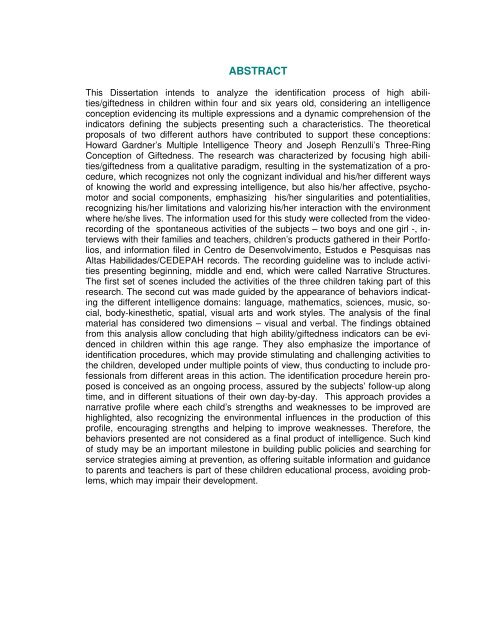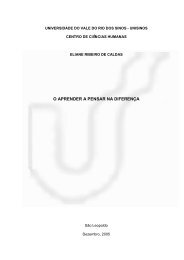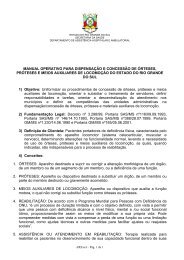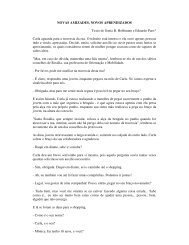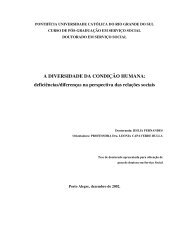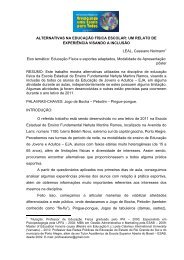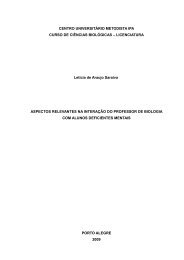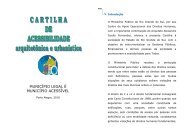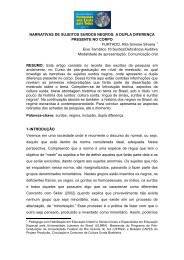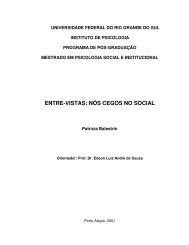VIAGEM A âMOJAVE-ÃKI!â - Faders
VIAGEM A âMOJAVE-ÃKI!â - Faders
VIAGEM A âMOJAVE-ÃKI!â - Faders
You also want an ePaper? Increase the reach of your titles
YUMPU automatically turns print PDFs into web optimized ePapers that Google loves.
ABSTRACT<br />
This Dissertation intends to analyze the identification process of high abilities/giftedness<br />
in children within four and six years old, considering an intelligence<br />
conception evidencing its multiple expressions and a dynamic comprehension of the<br />
indicators defining the subjects presenting such a characteristics. The theoretical<br />
proposals of two different authors have contributed to support these conceptions:<br />
Howard Gardner’s Multiple Intelligence Theory and Joseph Renzulli’s Three-Ring<br />
Conception of Giftedness. The research was characterized by focusing high abilities/giftedness<br />
from a qualitative paradigm, resulting in the systematization of a procedure,<br />
which recognizes not only the cognizant individual and his/her different ways<br />
of knowing the world and expressing intelligence, but also his/her affective, psychomotor<br />
and social components, emphasizing his/her singularities and potentialities,<br />
recognizing his/her limitations and valorizing his/her interaction with the environment<br />
where he/she lives. The information used for this study were collected from the videorecording<br />
of the spontaneous activities of the subjects – two boys and one girl -, interviews<br />
with their families and teachers, children’s products gathered in their Portfolios,<br />
and information filed in Centro de Desenvolvimento, Estudos e Pesquisas nas<br />
Altas Habilidades/CEDEPAH records. The recording guideline was to include activities<br />
presenting beginning, middle and end, which were called Narrative Structures.<br />
The first set of scenes included the activities of the three children taking part of this<br />
research. The second cut was made guided by the appearance of behaviors indicating<br />
the different intelligence domains: language, mathematics, sciences, music, social,<br />
body-kinesthetic, spatial, visual arts and work styles. The analysis of the final<br />
material has considered two dimensions – visual and verbal. The findings obtained<br />
from this analysis allow concluding that high ability/giftedness indicators can be evidenced<br />
in children within this age range. They also emphasize the importance of<br />
identification procedures, which may provide stimulating and challenging activities to<br />
the children, developed under multiple points of view, thus conducting to include professionals<br />
from different areas in this action. The identification procedure herein proposed<br />
is conceived as an ongoing process, assured by the subjects’ follow-up along<br />
time, and in different situations of their own day-by-day. This approach provides a<br />
narrative profile where each child’s strengths and weaknesses to be improved are<br />
highlighted, also recognizing the environmental influences in the production of this<br />
profile, encouraging strengths and helping to improve weaknesses. Therefore, the<br />
behaviors presented are not considered as a final product of intelligence. Such kind<br />
of study may be an important milestone in building public policies and searching for<br />
service strategies aiming at prevention, as offering suitable information and guidance<br />
to parents and teachers is part of these children educational process, avoiding problems,<br />
which may impair their development.


